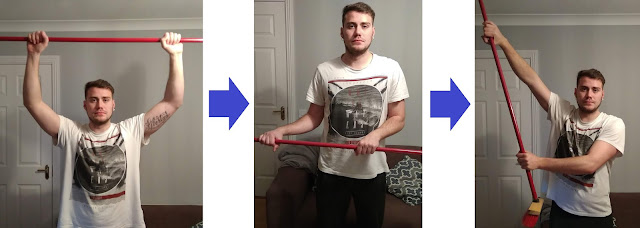What is subacromial impingement syndrome?
Treatment with exercises
Acromioplasty with exercise vs exercise alone
- This exercise strategy reduces the need for arthroscopic subacromial decompression within the three months timeframe used in the study 1,
Range of Motion and Stretching Exercises
1. Pendulum: stand up, support an arm in a table and the other one in the air. Do 20 small clockwise circles and 20 anticlockwise, make forward and backwards motions and side to side movements.
 |
| Pendulum Exercises |
 |
| Posture Exercises |
 |
| Shoulder Shrugs |
 |
| Active assisted range of motion |
 |
| Active range of motion |
 |
| Anterior Shoulder Stretch |
 |
| Posterior Shoulder Stretch |
Strengthening Exercises
8. External Rotation: lying on one side with your elbow at 90 degrees, raise your hand with or without weight.
 |
| External Rotation |
 |
| Scaption |
 |
| Chair Press |
 |
| Cat - Camel |
 |
| Press Up |
 |
| Rows |
 |
| Upright Row |
 |
| Low Trapezius |
Bibliography
2. Rahme H, Solem-Bertoft E, Westerberg CE, Lundberg E, Sorensen S, Hilding S. The subacromial impingement syndrome. A study of results of treatment with special emphasis on predictive factors and paingenerating mechanisms. Scand J Rehab Med 1998;30:253-62.
3. Brox JI, Gjengedal E, Uppheim G, et al. Arthroscopic surgery versus supervised exercises in patient with rotator cuff disease (stage II impingement syndrome): A prospective, randomised, controlled studyin 125 patients with a 2 ½ year follow-up. J Shoulder Elbow Surg 1997;8:102-11.


No comments:
Post a Comment